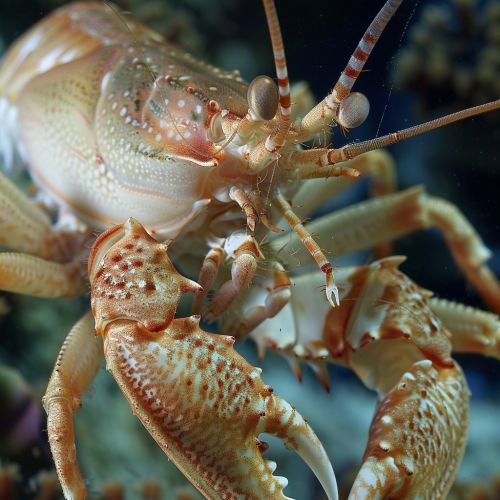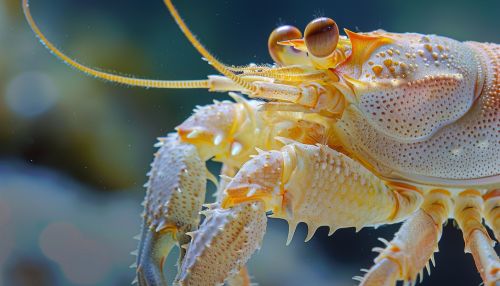Decapoda
Introduction
The order Decapoda is a diverse and significant group within the class Malacostraca, encompassing many well-known crustaceans such as shrimp, crabs, lobsters, and crayfish. This order is characterized by having ten limbs, which is reflected in its name derived from the Greek words "deka" (ten) and "pous" (foot). Decapods are found in a variety of aquatic environments ranging from freshwater to marine ecosystems and play crucial roles in their respective habitats.
Taxonomy and Classification
Decapoda is divided into two suborders: Dendrobranchiata and Pleocyemata. Dendrobranchiata includes prawns, while Pleocyemata encompasses a broader range of species including crabs, lobsters, and true shrimp. Pleocyemata is further divided into several infraorders such as Caridea (true shrimp), Astacidea (crayfish and lobsters), Achelata (spiny lobsters and slipper lobsters), Anomura (hermit crabs and related species), and Brachyura (true crabs).
Morphology
Decapods exhibit a wide range of morphological adaptations that enable them to thrive in diverse environments. The body is typically divided into three main parts: the cephalothorax, abdomen, and tail. The cephalothorax is covered by a carapace, which houses the gills and provides protection. The first three pairs of thoracic appendages are modified into maxillipeds, which are used for feeding. The remaining five pairs of appendages are the pereiopods, used for locomotion and manipulation of objects.


Reproduction and Development
Decapods exhibit a variety of reproductive strategies. Most species have separate sexes, although hermaphroditism occurs in some groups. Fertilization is typically internal, and females often carry fertilized eggs on their pleopods until they hatch. The developmental stages include a series of larval forms, such as the zoea and megalopa, before reaching the adult stage. These larval stages are crucial for dispersal and survival in the planktonic environment.
Ecology and Behavior
Decapods occupy a wide range of ecological niches. They can be found in almost every aquatic habitat, from the deep sea to freshwater rivers and lakes. Many species are benthic, living on or near the substrate, while others are pelagic, swimming freely in the water column. Decapods play essential roles in their ecosystems as predators, scavengers, and prey. Their behaviors are equally diverse, with some species exhibiting complex social structures and communication methods.
Economic Importance
Decapods are of significant economic importance worldwide. Species such as Penaeus (prawns), Homarus (lobsters), and various crabs are heavily fished and farmed for human consumption. The fishing industry relies on sustainable practices to ensure the long-term viability of decapod populations. Additionally, decapods are used in scientific research due to their varied physiology and behaviors.
Conservation
Many decapod species are facing threats from overfishing, habitat destruction, and climate change. Conservation efforts are crucial to protect these species and maintain the ecological balance. Marine protected areas, sustainable fishing practices, and habitat restoration projects are some of the measures being implemented to conserve decapod populations.
